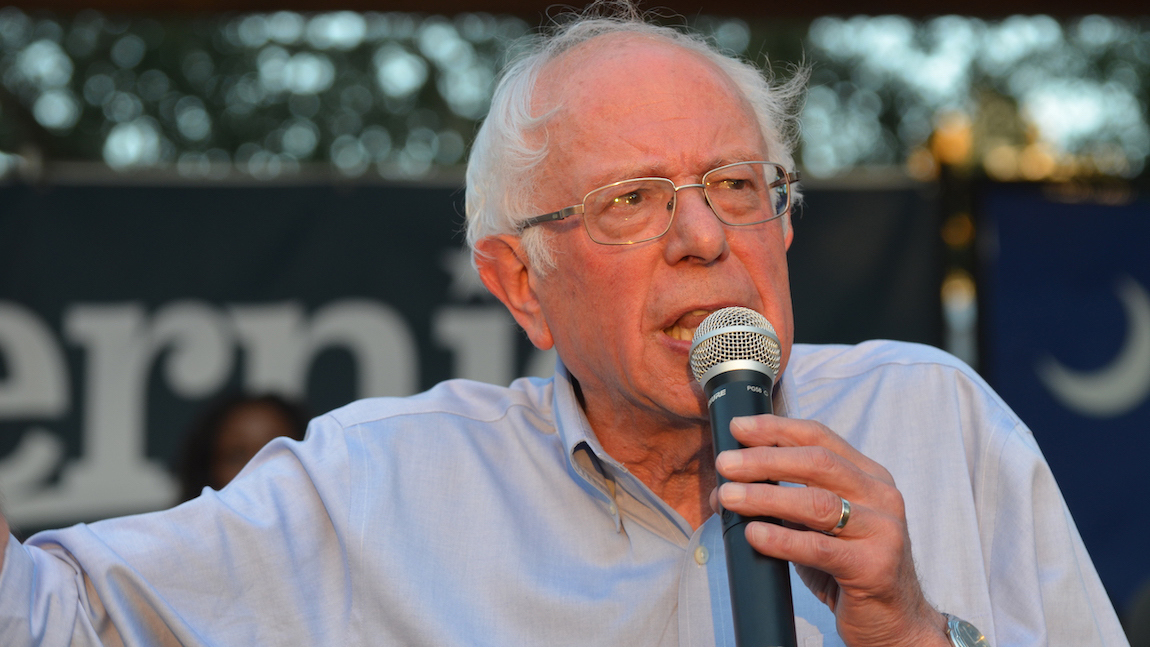By Jeremy Holland
Thousands of South Carolina residents are hurting. They are stuck in minimum wage jobs and it’s not nearly enough to get by, let alone raise a family or save for the future.
Moms and dads both holding down more than one job is commonplace in South Carolina, where the state minimum wage of $7.25 per hour is directly tied to the current federal minimum wage rate, which hasn’t been updated since 2009, over a decade ago.
To put this in perspective, working a minimum wage job pays $290 for a 40-hour week — about 15K annually. Every year South Carolina’s hourly workforce has one of the largest shares of minimum wage workers in the nation, roughly 61,000 workers.
Why hasn’t South Carolina implemented a minimum wage that can provide a living income for many of its hard-working residents? Businesses say they can’t afford it, and their Republican pals in the state legislature and the governor’s mansion protect their interests, not those of the minimum wage worker.
South Carolina is a “right to work state,” meaning that if a company or industry already has a union, incoming workers are not compelled to join. On the surface, the state looks good as it has one of the lowest unemployment rates in the country. Having a job, however, does not mean workers are earning a living wage.
Rates of worker pay in the state’s two largest cities tell the story. About 44 percent of workers in Charleston are employed in low-wage work, earning a median wage of $10.12 per hour. In Columbia, about 45 percent earn median hourly wages of $9.84 per hour.
Even many professional jobs that require a college degree like teaching do not pay enough for families to make ends meet. For example, one teacher in Cayce Elementary in Cayce, SC testified to making $36,000, which doesn’t completely cover her family’s monthly bills. In fact, hundreds of other teachers from her region have begun working at a local drug manufacturer called Nephron Pharmaceuticals as a second job just to make ends meet.
House Bill 3184 was introduced in the South Carolina House of Representatives last January. Currently, the bill, which proposes incremental changes increasing the minimum wage to $15 an hour by 2024, is stuck in the House Ways and Means Committee. After 2024, the bill would require the state to consult the Consumer Price Index to determine future wage increases. Still, even if it makes it through the House, the bill must successfully pass through the Senate and be delivered to the Governor for final approval.
During his presidential campaign, candidate Joe Biden promised that American workers would receive the pay, benefits, and protections they deserve. Part of that promise was to increase the federal minimum wage to $15. While this bill has stalled in a gridlocked Congress blocked by Republicans, President Biden recently issued an executive order increasing the hourly minimum wage for all federal contractors to $15.
For years, Republicans have embraced economic arguments against raising the minimum wage. For instance, Americans for Tax Reform and other conservative think tanks predict job losses, small business closures, and higher prices for consumers. However, there are a few Republicans like Sens. Mitt Romney (UT) and Tom Cotton (AR) who are at least willing to support a minimum wage increase to $10 an hour.
The Fight for $15 Movement
Considering this battle over providing a living wage in South Carolina, let’s look at one dynamic social movement that has been successful in a nationwide campaign in raising the wages of millions of working-class Americans.
The Fight for $15 movement started in 2012 with the goal of pressuring private corporations and public legislators to raise the minimum wage up to $15 an hour nationwide. The movement began when 200 fast-food workers walked off the job to demand $15 an hour and union rights in New York City. Today, they are a global movement in over 300 cities on six continents. Participants include fast-food workers, home health aides, childcare teachers, airport workers, adjunct professors, retail employees, and underpaid workers everywhere.
The organizational strategy behind the movement was first conceived by the Service Employees International Union (SEIU). This union is one of the nation’s largest and most dynamic unions having nearly 2 million members and an annual budget of $300 million. In late 2010, union leaders were distressed that the percentage of workers in private-sector unions were continuing to slide to the lowest level in a century, having only 7 percent of private sector workers unionized. They recognized that the labor movement’s traditional model was not getting the job done.
Therefore, SEIU came together with grassroots groups in New York and asked a pertinent question: Why not begin a campaign to mobilize New York City’s 65 thousand fast food workers, and the nation’s nearly 4 million? This idea would turn into the biggest, most successful labor effort in decades.
Because the minimum wage sets pay scales in low-wage industries, a $15 minimum wage would transform jobs in restaurants, hotels, and warehouses from desperation to a living wage. Others would benefit indirectly through spillover wage effects—employers often increase the wages of workers earning slightly above the new minimum wage to maintain incentives to move up the pay scale. This would bring the total positively affected by a $15 minimum wage to 50 percent of American workers.
Importance of the Minimum Wage
The minimum wage sets a salary floor. The last time the Congress raised the minimum wage was 2009, when it was set to $7.25 an hour. Since then, Congress has abnegated its responsibility to American workers refusing to increase that basic wage to account for the increased cost of living. Consider the fact that since the late 1970s, the price of food has increased 244 percent and medical expenses 601 percent. Meanwhile, real wages have been stuck at a poverty level for more than 40 years.
If American workers are ever to financially rebound, a social movement is needed that is focused on procuring a fair share of the national income. The Fight for $15 movement is primarily focused on addressing this vast income inequality issue. They held their first meeting in August 2012, with 40 or so workers from McDonald’s, Domino’s, Burger King, KFC, and other chains gathering inside a teacher’s union hall in downtown Brooklyn.
On November 29, 2012, the first strike was held where 200 workers walked out of their jobs in protest. Outside various fast-food restaurants in New York City, strikers were chanting slogans like “Hey, hey, what do you say? We demand fair pay” and “Hey, hey, ho, ho, seven-twenty-five has got to go!” The movement quickly spread, where strikes were staged in 50 cities in August and in over 100 cities that December.
They also began to fight back against the perception that fast food jobs are mainly for entry level employees or are teens looking for pocket money. Their research showed that 26 percent of fast-food workers were raising children, 68 percent were not in school, and just 18 percent were teens living with their parents.
Creating a Union for Low Wage Workers
Working Americans built the middle class by shaping the political process to produce shared prosperity and economic security, by building unions and bargaining collectively with their employers, by pressing for better wages, better working conditions, and better benefits.
Over the past 50 years this middle class has continuously dwindled, and we are becoming ever more a society of haves and have-nots. Therefore, it is so important that a new worker’s movement for the 21st Century act as a successful counterweight to big business.
In this effort to create a stable union, SEIU has established a new branch called the National Fast Food Worker’s Union (NFFWU). In their annual report to the U.S. Department of Labor in 2018, SEIU reported providing almost 90 percent of the new union’s revenue coming to $6.1 million in direct support for worker organizing as well as strike support.
On the official Fight for $15 website, they provide advice to workers who are interested in joining the movement. The two most important things workers can accomplish in the short term is to organize their workplaces and take the fight to the streets. Part of this initiative is to teach workers how to properly go on strike by making sure their actions are compliant with the National Labor Relations Act so they cannot be automatically fired by their employer.
Current Federal Proposals
Fight for $15 do take some credit for the bill that was recently passed in the House in 2019, entitled the Raise the Wage Act. If this legislation is passed in the Senate, it would gradually increase the federal pay floor to $15 per hour, then index future increases to median wage gains. Independent analysis of the Raise the Wage Act of 2021 finds that the legislation would raise wages for nearly 32 million American workers—more than 20 percent of the workforce. This would put an extra $3,300 in the pockets of full-time workers each year.
Another bill that has already passed the House in March 2021, but is hung up in the Senate, is the Protecting the Right to Organize Act. A few things the bill accomplishes includes ensuring that workers can reach a first contract quickly after a union is recognized, ending the practice of employers punishing striking workers by hiring permanent replacements, holding corporations responsible for retaliating against collective bargaining, and creating pathways for workers to form unions in newer industries.
State and Corporate Arenas
The Fight for $15 movement has already won major gains for workers all over the country. By standing up and going on strike they have won $150 billion in raises for 24 million people, more than 30 percent of the nation’s workforce. They have taken the fight to over 300 cities in the U.S. and 60 countries across the world.
Now, raising the minimum wage up to $15 an hour is law in nine states: California, Massachusetts, Connecticut, Illinois, Maryland, New Jersey, New York, Florida, and Virginia. In fact, about 40 percent of the U.S. workforce lives in states where the minimum wage is mandated to rise to $15 an hour incrementally over the next few years.
Additionally, increases to the minimum wage to $15 an hour is now law in many cities like Seattle. After this initial breakthrough, many major cities followed their lead, with San Francisco and Los Angles in 2015 and New York City in 2016. More recently, throughout 2019 to present day, there have been more pledges to raise the minimum wage to $15 in U.S. cities like Phoenix, Philadelphia, and Chicago.
Big companies including Facebook, Target, Disney, and Amazon have all moved to $15 or pledged to do so. Also, in early 2021, Walmart-owned Sam’s Club instituted a chain-wide minimum wage raise to $15 an hour. Following this trend, both Walgreens and CVS have also established $15 as an hourly minimum wage. Amazon has also raised pay for half a million workers, and announced in 2021 that 125,000 new workers would be hired with an average starting pay of $18 an hour.
In sum, the ambition of Fight for $15 and its supporters is nothing less than to transform the service sector into the foundation for the next American middle class. This collective struggle of low wage earners is powerful and will continue to get the attention of major corporations, state legislatures, and millions of empathetic Americans.






